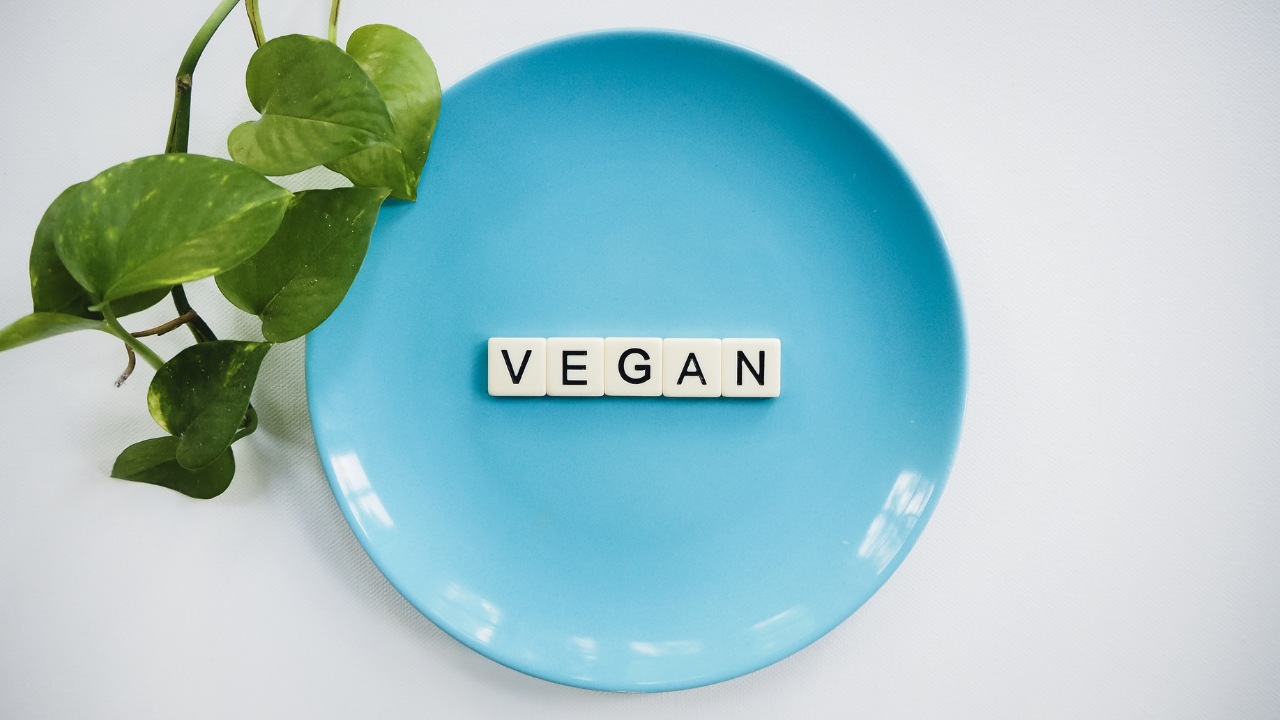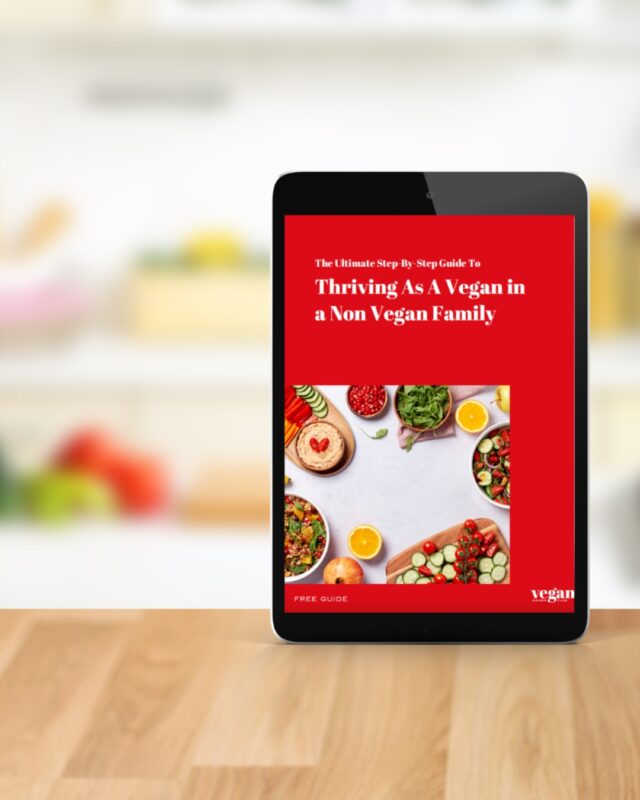My journey into veganism happened overnight —- with more than a few challenges. My husband and kids didn’t join me. It was rough and rocky for a loooong time until I found my groove. I remember the early days of planning and preparing separate meals. As a newbie, I bought every vegan ingredient in the grocery store only to come home and stare at them in my fridge with no idea how to prepare them in a meal. I cried a lot — feeling like the only one facing the struggle of blending dietary preferences into one meal. I felt stressed and tense at dinner (which often led to arguments and strain in my marriage). Meals became a source of stress rather than enjoyment and bonding over food.
The dynamics of mixed-diet families are crucial to navigate. They can influence not only our relationships but also our overall happiness and health. That’s why in this blog post, I aim to tackle the most common challenges faced by vegans in mixed-diet families and provide practical solutions from my first-hand experience. From meal planning and kitchen organization to social dynamics, I’m diving into the toughest challenges I’ve faced and practical strategies for how to overcome them. (For even more guidance, download my free “how-to” Guide To Thriving As A Vegan in a Non-Vegan Family here.)
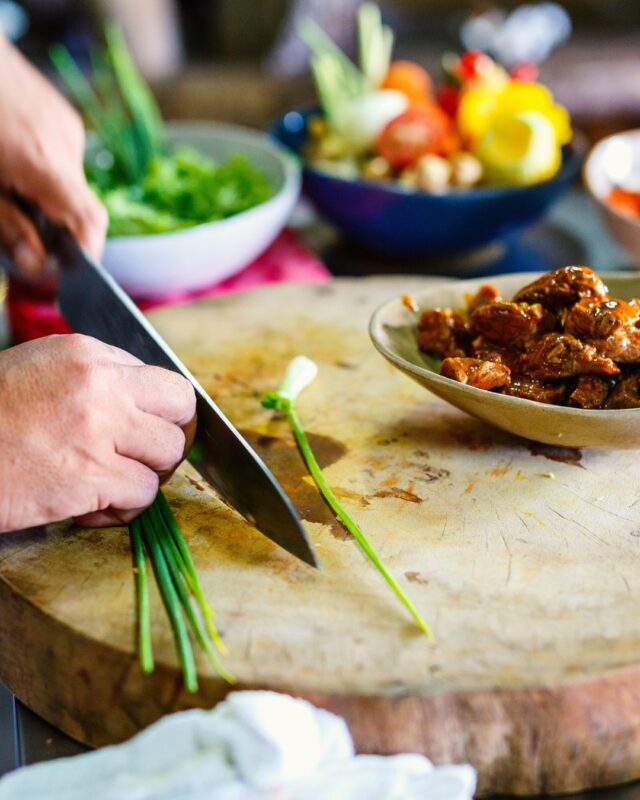
Challenge #1: Meal Planning & Prep
Planning meals that satisfy both vegan and non-vegan family members can be a daunting task. The complexity arises from trying to balance diverse dietary needs without making separate meals, which can be time-consuming and exhausting.
Solution:
Creating a single meal that caters to both vegan and non-vegan dietary needs can be simple and enjoyable. The key is to curate your dinner menu around a plant-core main dish with flexible options to customize according to individual preferences. Two of my family’s go-to weekly meal ideas include:
- Food Bars: Set up a buffet-style meal and offer a variety of toppings and sides that all family members can choose from. Think taco bars, pizza nights, or Buddha bowls where family members can pick from grains, proteins (like tofu for vegans and grilled chicken for non-vegans), and assorted vegetables. (Get more ideas here.) This approach allows everyone to personalize their meals, ensuring satisfaction for all dietary preferences.
- Sheet Pan Meals: Prepare two sheet pans containing the same meal with different proteins. Double the marinade and divide between the two pans for an effortless meal with easy clean up. Browse some ideas here.
Practical Tip
Batch cooking (preparing ingredient components for dinner recipes ahead of time) streamlines dinner and cuts down on prep on busy weeknights. Protein marinades, grains and roasted vegetables are all great ingredients to prep ahead.
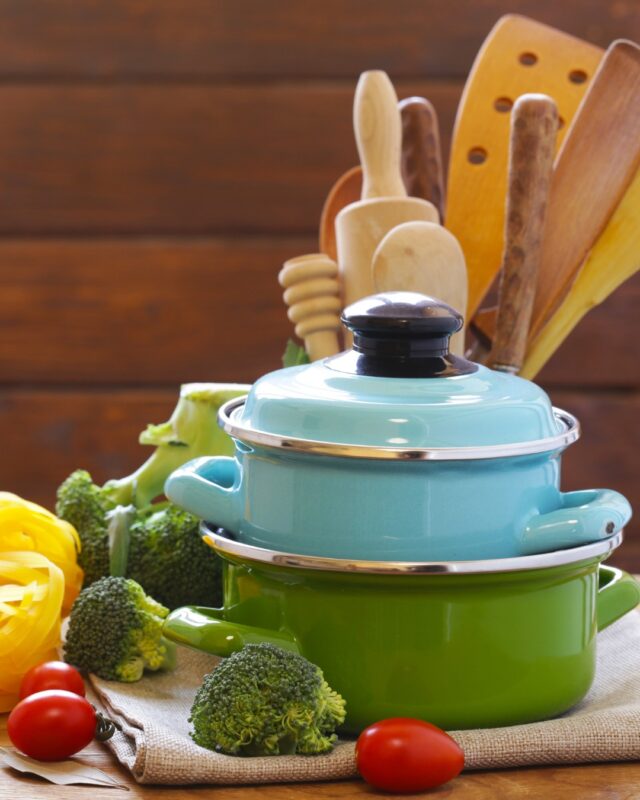
Challenge #2: Kitchen Space and Cross-Contamination
This was one of my biggest challenges when adopting a vegan diet. I freaked out when my husband used the same spatula for my tofu as his chicken, even if it went through the dishwasher in between handling. I also didn’t want to cook my food in the same pots and pans where meat or cheese had previously been sauted or melted.
Solution:
A well-organized kitchen and clear systems to differentiate between vegan and non-vegan cooking tools is the answer here and its easier than you think. I use these practical strategies in my kitchen:
- Color Coding System: Assign specific colors to cooking utensils (cutting boards and knives too), and sponges to easily distinguish between those used for vegan and non-vegan ingredients. This simple visual cue can help everyone in the household quickly identify the appropriate tools to use.
- Designate Separate Cookware: Store separate pots, pans, and baking sheets for vegan cooking. (I store my vegan cookware in a specific drawer to keep them easily accessible and separate from non-vegan cookware. With this simple system, I never have to worry that my vegan meals will come into contact with animal products.
Practical Tip:
Consider keeping a set of essentials, such as knives, cutting boards, pots, and pans, exclusively for vegan cooking. Label these items clearly or use a consistent color scheme to distinguish them from non-vegan tools.
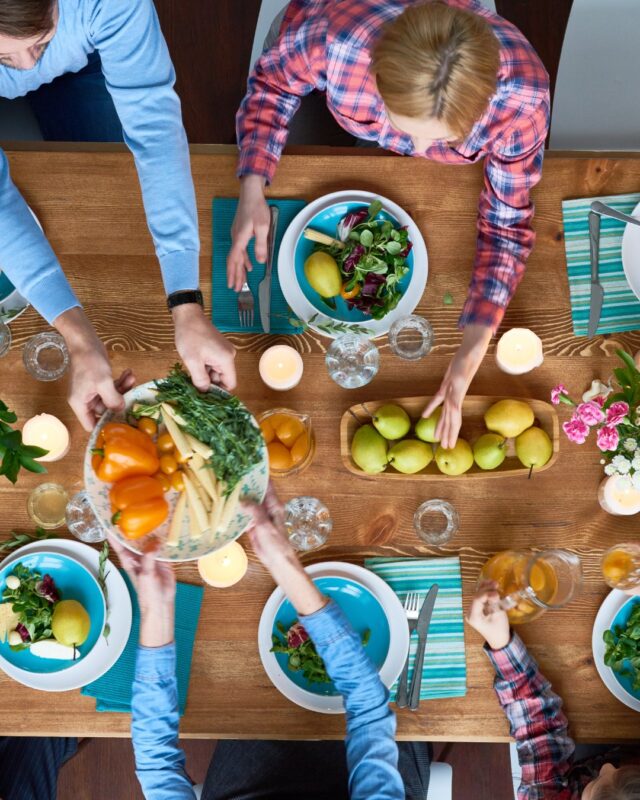
Challenge #3: Social Dynamics and Acceptance
Being the only vegan in a family can present unique social challenges. You might face questions, misunderstandings, or even criticism about your dietary choices. At times, it can feel lonely. At first, I found myself constantly having to defend my choice and shake off hurtful wise cracks. I also became a broken record for answering questions like “Where do you get your protein?”.
Solution:
Navigating these social dynamics requires clear and respectful communication about your dietary choices. Here are some strategies to help you assert your preferences while maintaining family harmony:
- Communicate Respectfully: Open and respectful communication is key to helping your family understand your vegan lifestyle. Explain your reasons for choosing a vegan diet calmly and clearly, whether they are health-related, ethical, or environmental. Emphasize that your choices are personal and not a critique of others’ diets. When your family understands your motivations, they are more likely to respect your choices and support you.
- Be Proactive: Being your own personal advocate helps ensure your dietary needs are taken seriously without creating conflict. Politely but firmly ask for what you need during meals and food preparation. For example, if attending a family gathering, ask if you can bring a vegan dish to share or if there can be a plant-based option.
Practical Tip:
Encourage open family discussions about dietary preferences and finding common ground. Schedule a family meeting to talk about everyone’s dietary needs and preferences. Approach the conversation with empathy and a willingness to listen. Suggest ways to incorporate everyone’s preferences into meals, such as having both vegan and non-vegan options available or rotating meal planning responsibilities.
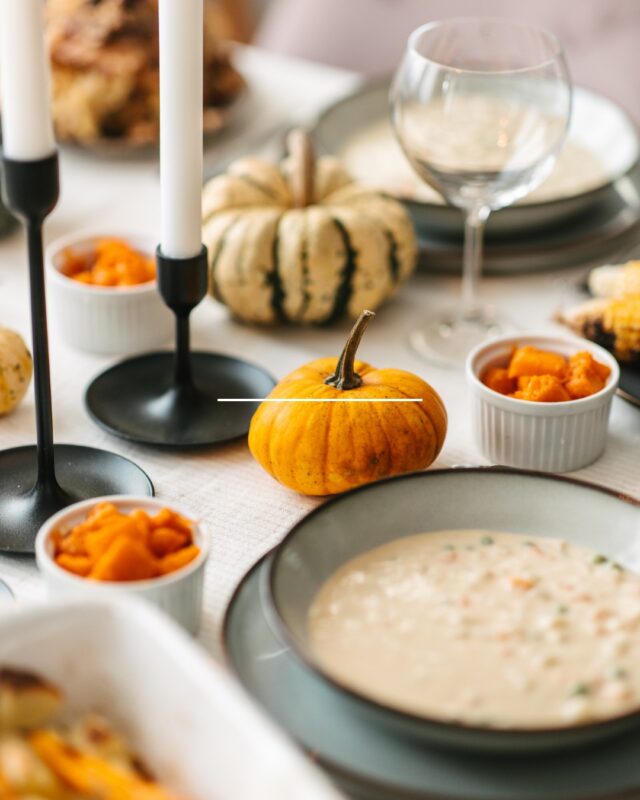
Challenge #4: Navigating Special Occasions
Maintaining a vegan diet during family gatherings and holidays can be particularly challenging. My first Thanksgiving, Christmas and Hanukkah as a vegan were tough as I figured how to veganize traditional dishes so I could celebrate the holiday with favorite foods. As the host of many of these family gatherings, I struggled with how to balance my vegan lifestyle while still respecting their wishes for celebrating the holiday.
Solution:
Successfully navigating special occasions as a vegan requires a combination of planning ahead and bringing vegan dishes to share. Here are some strategies to help you maintain your diet without feeling left out:
- Plan Ahead: Communicate with the host in advance about your dietary needs. Offer to bring a couple of vegan dishes to share. This not only guarantees that you’ll have something to eat but also introduces others to delicious vegan options.
- Bring Vegan Dishes to Share: Prepare a few crowd-pleasing vegan dishes that complement the event’s menu. Think about appetizers, mains, and desserts that can appeal to both vegans and non-vegans. Examples include vegan stuffed mushrooms, lentil loaf, and dairy-free pumpkin pie.
Practical Tip:
If hosting, invite non-vegan guests to bring their favorite dish so you’re not tasked with having to cook animal products if you’re uncomfortable. Buy pre-cooked or prepared meat dishes from the grocery store that your partner can heat and serve (if they aren’t able to prepare it homemade for the occasion). Round out the menu with vegan versions of traditional family favorites. For example, if your family loves green bean casserole, make a vegan version using plant-based ingredients. If pumpkin pie is a holiday staple, prepare a vegan pumpkin pie that tastes just as delicious as your family’s traditional recipe.
Free Guide
Navigating a vegan lifestyle within a non-vegan family can indeed be challenging, but it’s far from impossible. By implementing practical strategies for meal planning, kitchen organization, and clear communication, you can overcome common challenges to create a harmonious dining experience that satisfies everyone’s dietary needs. From handling social dynamics with grace to preparing for special occasions with thoughtful planning, the strategies above have enabled me to live my best vegan life alongside my non-vegans.
For more in-depth strategies and tips on overcoming the challenges of being a vegan in a mixed-diet family, download my free “Guide to Thriving as a Vegan in a Non-Vegan Family.” It’s packed with practical advice and solutions to help you navigate this unique dynamic successfully.

